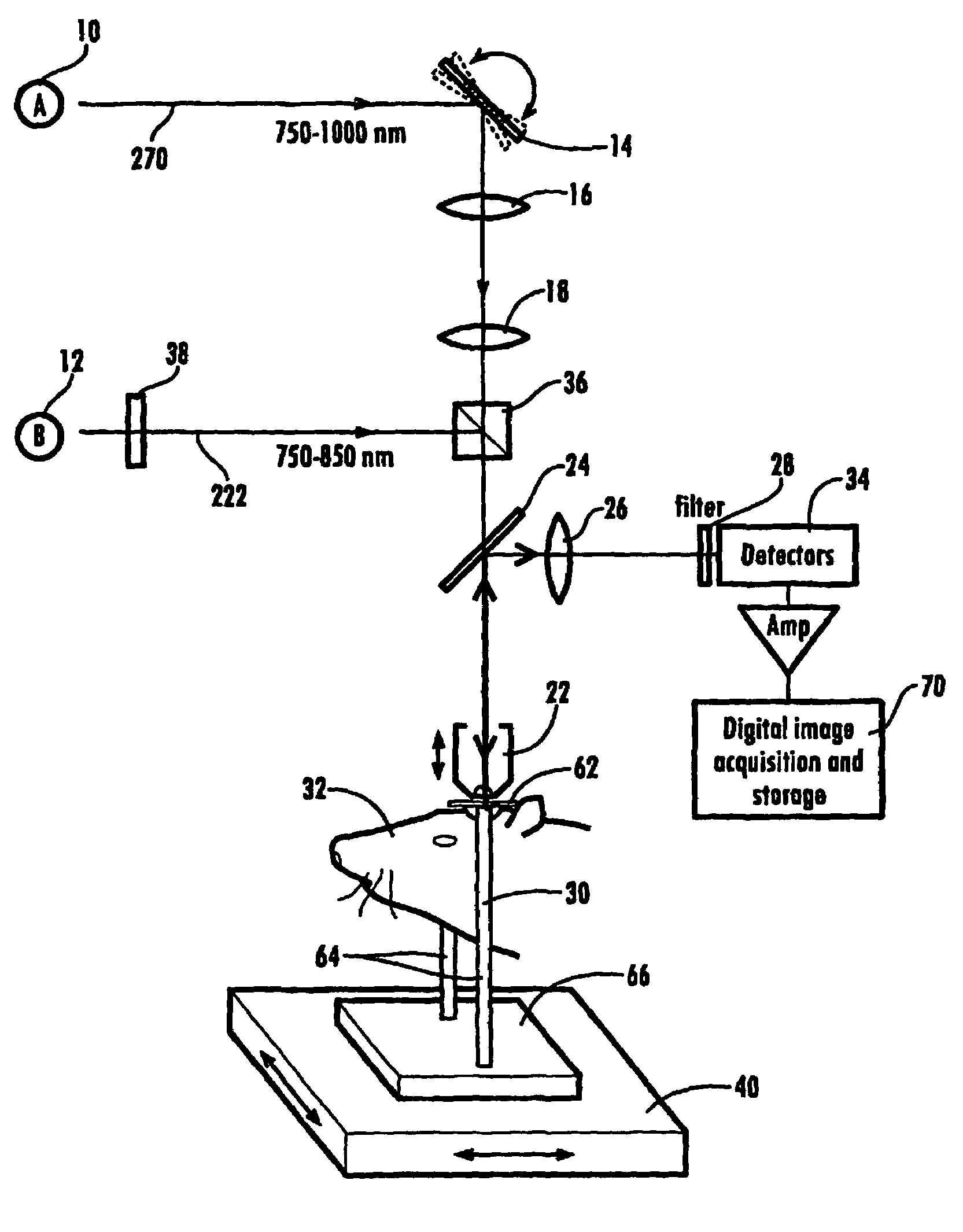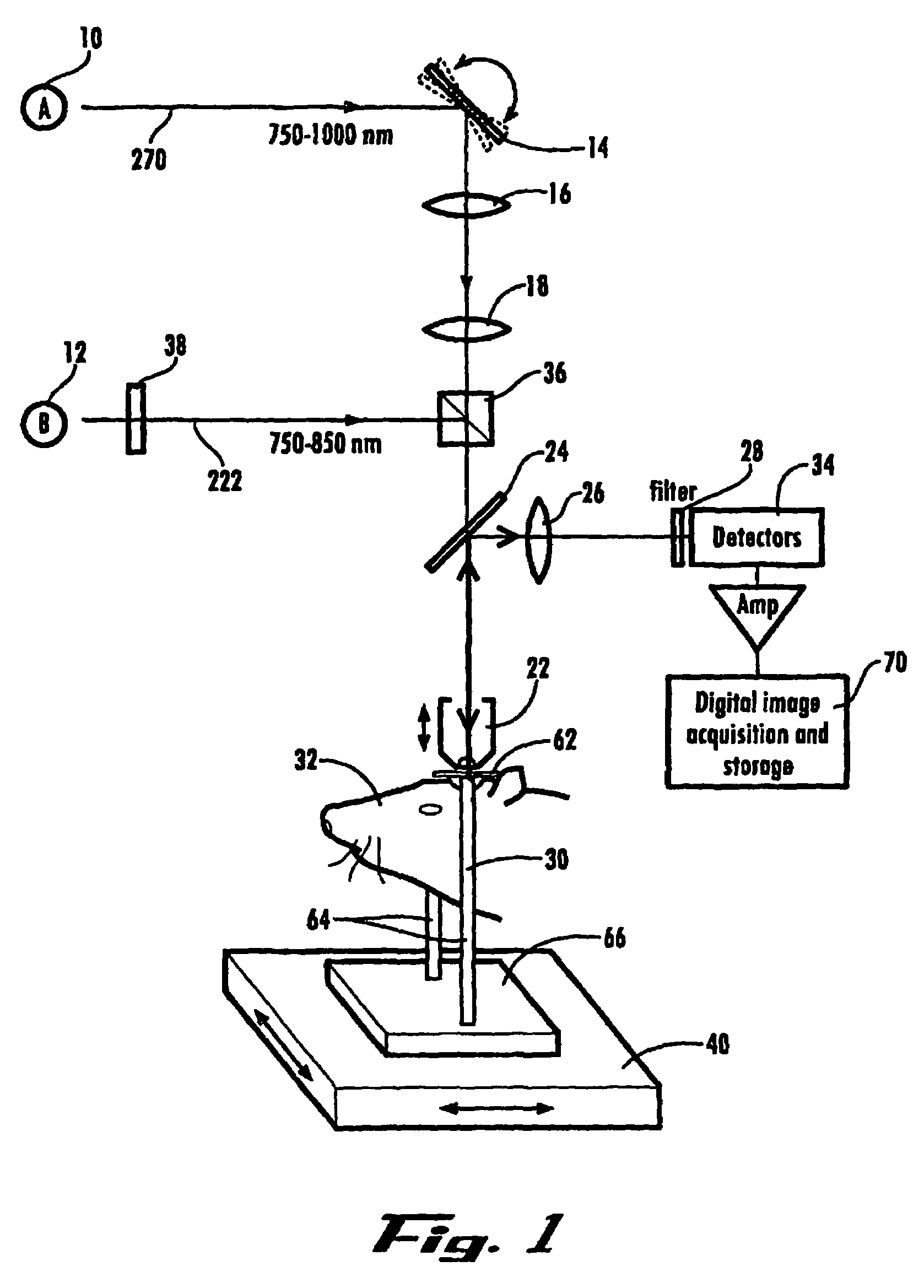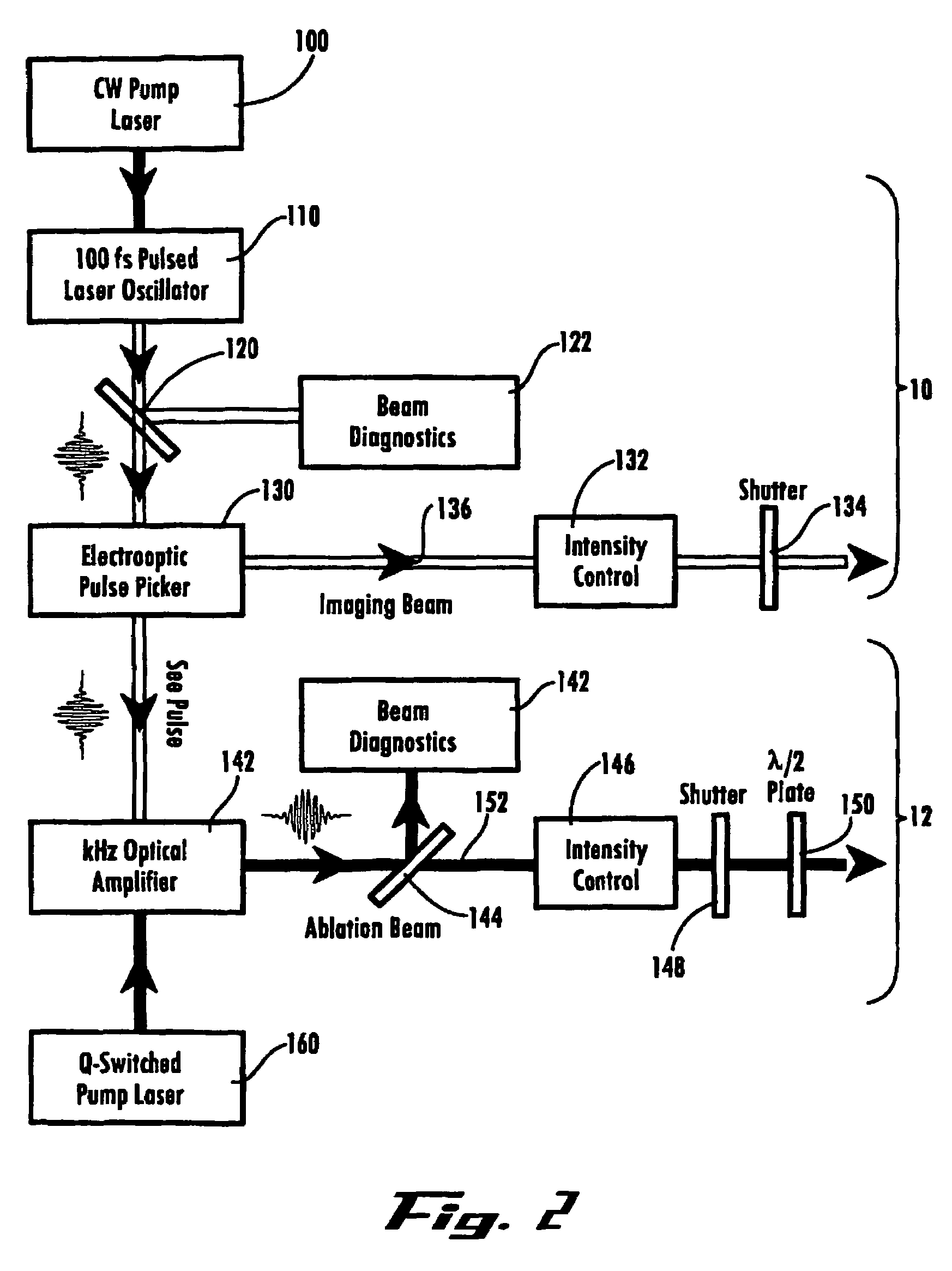Device and method for inducing vascular injury and/or blockage in an animal model
a technology of which is applied in the field of devices and methods for inducing vascular injury and/or blockage in animal models, can solve the problems of direct photoionization of the tissue at the focus and thermoelastic damage to the local surrounding tissue, and achieve the effect of facilitating injury
- Summary
- Abstract
- Description
- Claims
- Application Information
AI Technical Summary
Benefits of technology
Problems solved by technology
Method used
Image
Examples
example 1
[0050]Sprague-Dawley rats, 100-300 grams in weight, were prepared in order to provide optical access to neuronal blood flow. The animals were anesthetized with urethane and craniotomies, roughly 4 millimeters by 4 millimeters in extent, were performed over parietal cortex to create a cranial window. The dura was removed and a metal frame 62 was glued to the skull. The exposed brain surface was covered with 1.0 to 1.5% low gelling temperature agarose(W / V) in artificial cerebral spinal fluid (ACSF). A glass coverslip was clipped in place on top of the agarose to maintain pressure over the brain and to provide optical access. Water soluble fluorescein-isothiocyanate dextran was injected intravenously to label the blood plasma for the purpose of targeting and imaging vessels. Alternatively, a thinned-skull preparation can be performed to gain optical access to the neuronal blood flow. The metal frame is then mounted to a kinematic mount and computer-controlled translation stage at the b...
example 2
[0058]Using the experimental set-up (animal preparation, system configuration and measurement) described in Example 1, photodisruption was performed on vessels in the cortex ranging in depth from the surface to ˜175 micrometers in depth. The resulting vascular disruption was found to divide into three categories, which are listed below in order of the approximate severity and size of the damage to the microvessel:
[0059]Thrombosis—Near the threshold energy for vascular disruption and with a limited number of pulses, photodisruption results in extremely limited extravasation of plasma. TPSLM images were taken at various time points before, during and after vascular photodisruption. In an exemplary experiment, the vessel is intact before irradiation. After irradiation with 10 pulses of 0.3 microjoules, a small amount of extravasated plasma could be visualized as fluorescence outside the vessel walls, however, the vessel lumen remained unobstructed. Extravasated fluorescence continued t...
PUM
 Login to View More
Login to View More Abstract
Description
Claims
Application Information
 Login to View More
Login to View More - R&D
- Intellectual Property
- Life Sciences
- Materials
- Tech Scout
- Unparalleled Data Quality
- Higher Quality Content
- 60% Fewer Hallucinations
Browse by: Latest US Patents, China's latest patents, Technical Efficacy Thesaurus, Application Domain, Technology Topic, Popular Technical Reports.
© 2025 PatSnap. All rights reserved.Legal|Privacy policy|Modern Slavery Act Transparency Statement|Sitemap|About US| Contact US: help@patsnap.com



